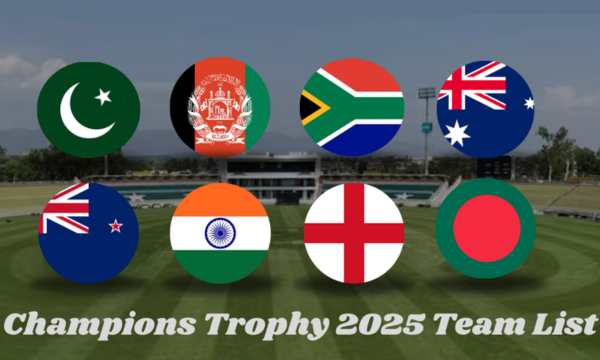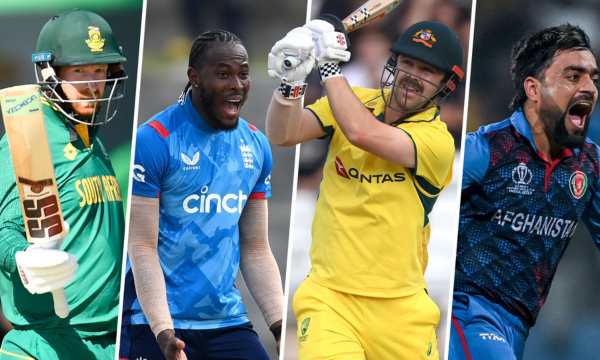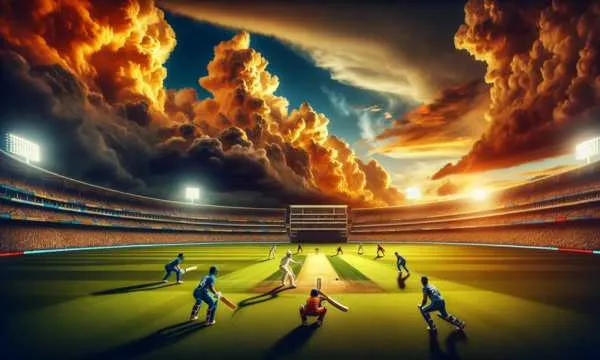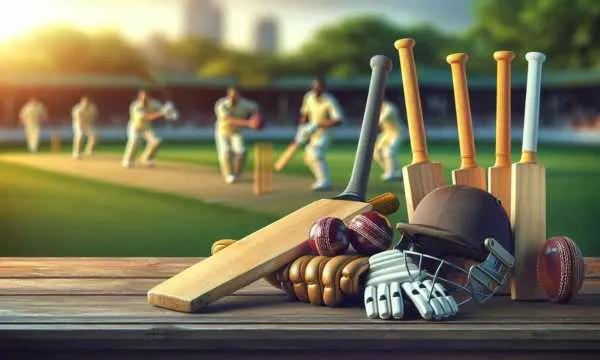Discover the ICC Champions Trophy: The Elite Cricket Tournament
The Champions Trophy is back for thrilling clashes between the top eight cricket teams in the world!
Ad
This iconic tournament represents the essence of elite cricket, bringing together only the greatest powers in a compact and intense format.
After a hiatus since 2017, the return of this competition promises to revive historic rivalries and create new memorable moments.
Get ready for two weeks of unmissable matches, where every ball can define the fate of a nation. Are you ready to witness who will lift the coveted trophy?
Discover the Greatest Elite Cricket Tournament
The Champions Trophy was born in 1998 as the ICC KnockOut Tournament, adopting its current name in 2002. This tournament represents the true essence of elite cricket, bringing together only the best teams in the world.
Unlike other events, this tournament does not make room for developing teams. Each edition takes place approximately every four years, creating great anticipation among sports fans.
The competition is recognized by the ICC as the second most prestigious tournament, behind only the World Cup.
The concentrated format of the Champions Trophy, lasting only two weeks, makes each match crucial for the teams. There is no margin for errors or late recoveries in this tournament.
The intensity of the matches is unparalleled, with the greatest cricket rivalries being showcased in succession.
For players, winning the tournament trophy represents dominating the elite of the sport in a short and decisive format.
Understand the Format, Rules, and Structure of the Champions Trophy
The Champions Trophy adopts an efficient format that maximizes high-level clashes between the main teams. The eight participating teams are divided into two groups of four, where they face all the opponents in the group.
Each victory in the group stage is crucial to advance to the semifinals, reserved only for the top two from each group. The teams play matches in the ODI format, with 50 overs per side and all standard rules of this format.
The structural simplicity is one of its greatest attractions for fans. Without repechages or second chances, the competition demands absolute consistency from the participating teams.
The scoring system follows the standard: two points for a win, one for a tie, and zero for a loss. In case of equal points at the end of the group stage, the Net Run Rate decides the rankings.
The semifinals pit the top finishers against the second-placed teams from the other group. The grand final takes place in a single match, crowning the champion of that edition.
How Teams Qualify for the Champions Trophy
The qualification system for the Champions Trophy has evolved over the years, always maintaining the principle of bringing together only the elite.
For the current edition, the top seven teams from the previous World Cup, plus the host country, qualified. This method ensures that only the teams with the best recent performance compete in the tournament.
Afghanistan will make its historic debut in the tournament after its impressive campaign in the last World Cup. Previously, the tournament used the world ranking as the main qualification criterion.
The limitation to only eight teams makes the qualification extremely competitive and prestigious. Traditional teams like Zimbabwe and Ireland continue to dream of their first participation in the tournament.
The guaranteed presence of the host country aims to stimulate the development of cricket in the host nation.
For many teams, qualifying for the tournament represents an important strategic goal in their four-year planning. Teams qualified for 2025:
- India: 2023 World Cup Champion.
- Australia: 2023 World Cup Runner-up.
- South Africa: 2023 World Cup Semifinalist.
- New Zealand: 5th place in the 2023 World Cup.
- Afghanistan: 6th place in the 2023 World Cup (debutant).
- England: 7th place in the 2023 World Cup.
- Bangladesh: 8th place in the 2023 World Cup.
- Pakistan: Co-host country.

Champions-Trophy-2025-teams-(Source-Google)
Remember Who Has Won the Trophy
The history of the Champions Trophy records a balanced distribution of champions, demonstrating the unique competitiveness of this tournament.
India leads with two titles (2002 and 2013), plus one shared with Sri Lanka in 2002. Australia also lifted the trophy twice, in 2006 and 2009, reaffirming its traditional strength in cricket.
Pakistan surprisingly won the tournament in 2017, defeating the favorite India in the final. South Africa (1998), New Zealand (2000), West Indies (2004), and Sri Lanka (2002, shared) complete the list of champions.
Interestingly, England, despite all its tradition, has never won the Champions Trophy. The 2017 final went down in history when Pakistan, then ranked eighth, overcame all favorites.
The 2013 edition was marked by a rain-shortened final between England and India. The tournament is known for producing unexpected champions, reinforcing its reputation for unpredictability.
Stars and Performances That Defined the Tournament
The Champions Trophy has always been a stage for memorable performances by the greatest talents in world cricket.
Chris Gayle dominated the 2006 edition with his powerful style, finishing as the top scorer with 474 runs.
New Zealander Shane Bond surprised in the 2002 edition, winning the title of best bowler with 13 wickets.
Shikhar Dhawan wrote his name in history by being the top scorer in 2013 and receiving the player of the tournament award.
Pakistani Fakhar Zaman shone in the victorious 2017 campaign, including a decisive century in the final against India.
Hasan Ali was crucial for Pakistan’s title in 2017, being named player of the tournament with 13 wickets. Marcus Trescothick’s performance in 2004 remains one of the best by an Englishman in the tournament.
The record for best bowling belongs to McGrath, with an impressive 7/15 against Namibia in 2001. Virat Kohli built his reputation with decisive performances in the 2013 and 2017 editions.

Champions-Trophy-star-players-(Source-Google)
Understand the Difference Between the Champions Trophy and the World Cup
The Champions Trophy and the World Cup are the two biggest international cricket tournaments, but they have distinct characteristics.
While the World Cup gathers between 10 and 14 teams in a tournament of approximately six weeks, the Champions Trophy concentrates only eight teams in two weeks.
This concentration of quality in the tournament results in consistently competitive matches between the sport’s powers.
The World Cup often includes developing nations, creating some unbalanced games in the early stages. The Champions Trophy, on the other hand, has no prolonged group stage, making each match decisive for the teams’ aspirations.
Historically, the Champions Trophy produces more surprises, with seven different nations lifting the trophy in eight editions.
The commercial value of the World Cup significantly surpasses that of the tournament, but the latter offers better returns per game.
For players, winning the World Cup remains the pinnacle of their careers, while the Champions Trophy represents consistent excellence. Both tournaments use the ODI format, but with different structures and qualification philosophies.
Tournament Comparison
| Feature | Champions Trophy | World Cup |
| Number of teams | 8 | 10-14 |
| Duration | 2-3 weeks | 6-7 weeks |
| Format | Groups + Semifinals + Final | Groups/Super 6/8 + Semifinals + Final |
| Frequency | Irregular (approximately 4 years) | 4 years |
| Created in | 1998 | 1975 |
| Matches per team | 5-6 | 9+ |
| Participation criteria | Ranking or World Cup performance | Regional qualifiers |
Unforgettable Moments and Unbeatable Records of the Tournament
Pakistan’s victory in 2017 remains one of the greatest upsets in the sport, defeating India by 180 runs. In 2013, England suffered a frustrating defeat to India in the final shortened to 20 overs due to rain.
The tied final of 2002 between India and Sri Lanka, resulting in co-champions, remains a unique case in the Champions Trophy.
The 448/4 posted by Sri Lanka against the Netherlands in 2006 remains the highest team score in the tournament’s history.
The defense of 125 by the West Indies against England in the 2004 final represents one of the most impressive feats of the tournament. Herschelle Gibbs led South Africa’s historic chase of 253 runs against India in 2002.
Chaminda Vaas’s hat-trick against Bangladesh in 2002, in the first three balls of the match, remains unmatched.
The record of six wickets for just two runs by the Netherlands against Sri Lanka in 2006 still impresses.
The Grand Return of the Champions Trophy to Pakistan
For the first time, Pakistan will be the main host of this prestigious competition, representing a milestone for Pakistani cricket.
The hybrid model approved by the ICC will allow matches involving India to be held in the UAE. The tournament will take place between February and March 2025, taking advantage of favorable weather conditions in the region.
Lahore, Karachi, and Rawalpindi will host most of the matches in modernized stadiums for the occasion. Security will be a priority, with strict protocols being implemented at all game venues.
For Pakistani cricket, hosting the tournament represents the culmination of its international rehabilitation journey. The ICC expects this tournament to set a positive precedent for future events in the country.
Information about the 2025 edition:
- Date: February 19 to March 9, 2025
- Main host: Pakistan
- Alternative host: UAE (for India matches)
- Host cities in Pakistan: Lahore, Karachi, and Rawalpindi
- Stadiums in the UAE: Dubai International Cricket Stadium and Sheikh Zayed Stadium
- Scheduled matches: 15
- Opening match: Pakistan vs. New Zealand (February 19, 2025)
- Anticipated classic: India vs. Pakistan (February 23, 2025, in Dubai)
Conclusion
The Champions Trophy represents the quintessence of international cricket, where only the best teams compete in an intense and decisive format. Its return in 2025, after eight years, reaffirms its importance in the sports calendar.
The competition offers a unique experience for fans, with consistent quality in all matches and historic rivalries on display. The compact format ensures that each game has significant weight, differentiating it from other tournaments.
As we await the 2025 matches, the anticipation grows to see who will join the select group of champions of this elite tournament.
FAQ
Why was the Champions Trophy not held between 2017 and 2025?
What was the biggest surprise in the history of the Champions Trophy?
How did Afghanistan qualify for the 2025 Champions Trophy?
Has any team ever won the Champions Trophy at home?
What was the lowest-scoring game in the history of the tournament?
 Want to Watch Live Cricket on Your Phone? Check Out the Best Apps
Want to Watch Live Cricket on Your Phone? Check Out the Best Apps
Watching live cricket on the go has never been easier. Ad With stronger networks and smarter streaming, fans now have reliable options to follow every matches […]
Keep reading Essential Apps and Tips for Building a Winning Fantasy Cricket Team
Essential Apps and Tips for Building a Winning Fantasy Cricket Team
Building a reliable fantasy cricket team is easier when you combine match awareness, disciplined strategy, and the right tools. Ad In the past month, the fantasy […]
Keep reading Cricket Tips: How to Get Started, Equipment, and Basic Shots
Cricket Tips: How to Get Started, Equipment, and Basic Shots
Cricket might look complex at first glance, yet its charm lies in teamwork, strategy, and the thrill of every delivery. Ad In today’s article, you’ll find […]
Keep reading